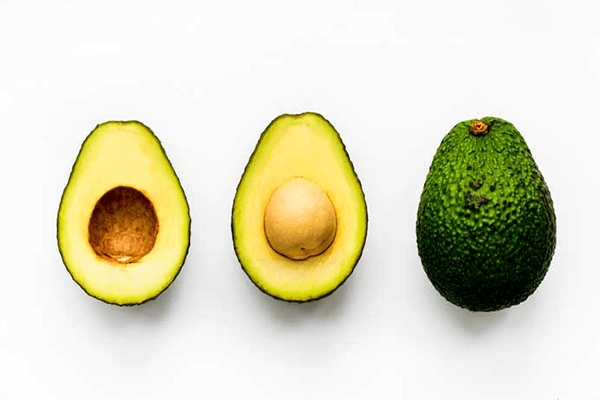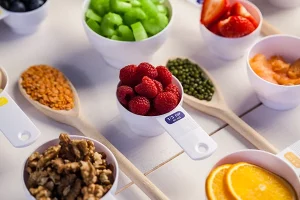California vs Florida Avocados – We ask which Avocado is Best for the Restaurateur
Lately, there’s been quite some interest in avocados, and as such, I’ve taken the time to write a short article about all things avocado. I’ll be looking at the health benefits of avocado, the different types of avocado and their nutritional differences, as well as how best to use different varieties in various recipes.
Health Benefits of Avocados
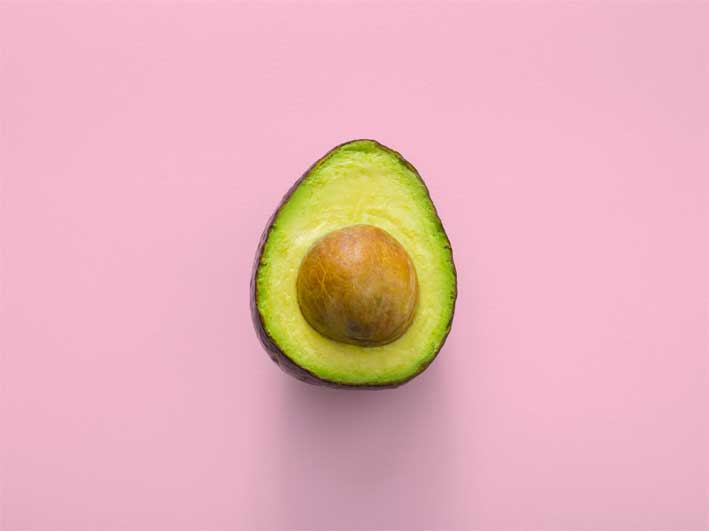
If you target health-conscious customers, then it’s certainly worth putting avocados on your menu if they aren’t already. Avocados have so many health benefits they are considered superfoods by many.
What is a superfood exactly? It’s simply a food containing a high quantity of nutrients and antioxidants. They can prevent illness and diseases in a number of ways, as well as boost the immune system. Avocados contain large quantities of iron and potassium as well as Vitamin K, C, B5, B6, and E. With all those micronutrients and antioxidants, avocados can boast a number of health claims:
- They are loaded with Monounsaturated Fatty Acids, making them heart-healthy
- They are loaded with fibre so they are great for your digestive system
- Eating avocados can reduce triglyceride and cholesterol levels and help control
- Avocados contain powerful antioxidants that protect our eyes
- Avocados may also relieve symptoms of arthritis and may prevent cancer
- Avocados may help you lose weight as they are filling and delicious
Read more: The Benefits of Labeling: Featuring Your Off-the-Shelf Food Products and Nutrition Facts
California vs Florida Avocados
Having decided to put this popular and delicious superfood on your menu, you may then run into confusion about different types of avocado. There are several varieties, in fact. California avocados are the most common and are the ones that most of us are familiar with, but Florida avocados are also popular.
Read more: Things that MUST be on a Food Label
So what’s the difference between the two?
When we refer to California avocados, we generally mean the Hass variety of avocados. However, while originating from one tree in California, Hass avocados are also grown in Mexico, New Zealand, and Peru. To make matters a little confusing, the Hass avocado can also be grown in Florida. California or Hass avocados generally weigh around 4 to 6 ounces. They have dark, pebbly skin and yellow-green flesh, which is very creamy, buttery and nutty.
Conversely, the Florida avocado is a much larger variety. These avocados usually weigh in at around ten ounces or 300 grams and may even weigh as much as a pound. The skin is bright green and shiny, and the flesh is paler green and not as rich with a milder, tropical flavour. Now, despite its larger size, the Florida avocado also goes by the name the slimcado on occasion. This is because gram per gram, the Florida avocado, is the slimline version. Rarely do foods of the same variety vary so much, but these are entirely different beasts, so to speak.
Side by side, the stats look like nutritional facts information:
| Type Of Avocado | California | Florida |
|---|---|---|
| Cals per 100 grams | 160 | 120 |
| Fat grams per 100 grams | 15 | 10 |
| Protein grams per 100 grams | 2 | 2 |
| Total Carbohydrate per 100 grams | 9 | 8 |
As you can see, the notable difference is that Florida varieties have 33% less fat and 25% fewer calories than the California variety.
Benefits of Florida Avocados for the Food Service Provider
So, which is the best avocado to choose? As a food service provider, it’s always good to keep costs down, but not at the expense of quality. In terms of value, the Florida avocado is often cheaper per fruit and certainly cheaper in like-for-like weight. Currently, the Florida avocado is experiencing popularity not just because it can be marketed as the slimcado but also because it’s a more eco-friendly variety requiring less water during production.
So if the Florida Slimcado is cheaper, surely that’s the avocado to choose from for your kitchen, right?
Not so fast, unfortunately. The two varieties have different qualities. In some recipes, you can use either avocado and enjoy experimenting (while using your MenuSano nutrition facts information software). In other recipes, one type of avocado may give better results than the other.
Read more: The Benefits of Labeling Software for your Restaurant
Best for Salads
Florida avocados are a wonderful ingredient in salads and tacos. In fact, they may be the better choice for salads when you want to retain the firm flesh. The Hass variety has a tendency to mush up in a tossed salad. Great, if you want avocado dressing, not if you want firm chunks of avocado flesh. Florida avocados are also ideal for making sushi as they are firm enough for you to slice through neatly. Either type of avocado makes a great addition to healthy main course salads. Because avocados are filling, they are ideal as a main ingredient and perfect to market to vegetarian and vegan customers.
Read more: Your Family Nutrition
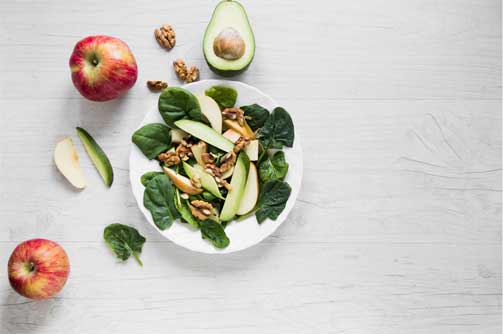
Best for Shakes
Florida avocados also make a good choice for shakes and smoothies. Because these are essential drinks, there’s a limit to how much you can charge, so the more economical Florida avocado makes sense. You also are not reliant on deriving creaminess or richness from the avocado. Indeed, you may not really want that in a healthy smoothie. If you do want a creamy yet healthy shake, you can achieve that with the addition of nonfat or low-fat frozen yogurt, bananas, almond or soya milk, and many other ingredients.
Read more: Restaurant Technologies that Improve Business
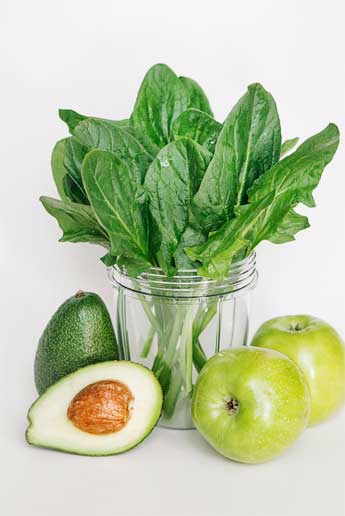
Best for Guacamole?
Most people prefer the Californian Hass variety for guacamole. Those who prefer Florida guac have acquired a taste for it because they were brought up on it. The general consensus is that Haas is best for Guac due to its velvety richness. Also, the slimcados’ milder taste can be easily overpowered by classic additions such as garlic, lime, and chilli.
If you want to use slimcados for guacamole, the addition of a little mayo, sour cream, or cream cheese can change the texture from a watery, unappealing paste that just isn’t right for many people to something very tasty. I prepared a classic guacamole with California avocados and a Florida avocado guac and compared the nutrition facts information of both using MenuSano software.
Read more: A Simple Guide to Different Types of Vitamins
Spicy Florida Guacamole
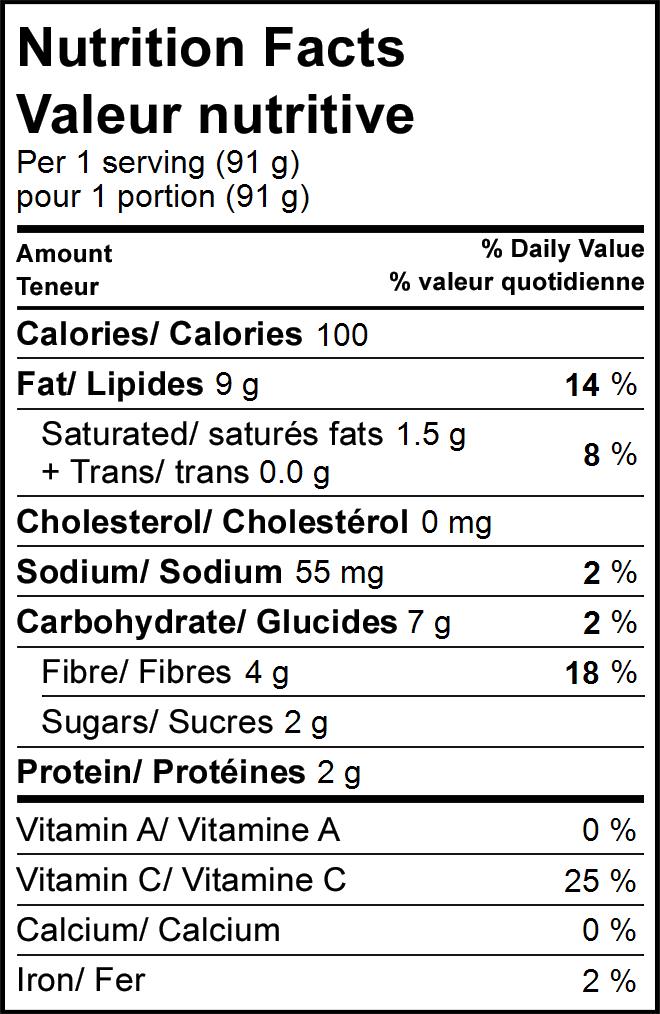
California Guacamole
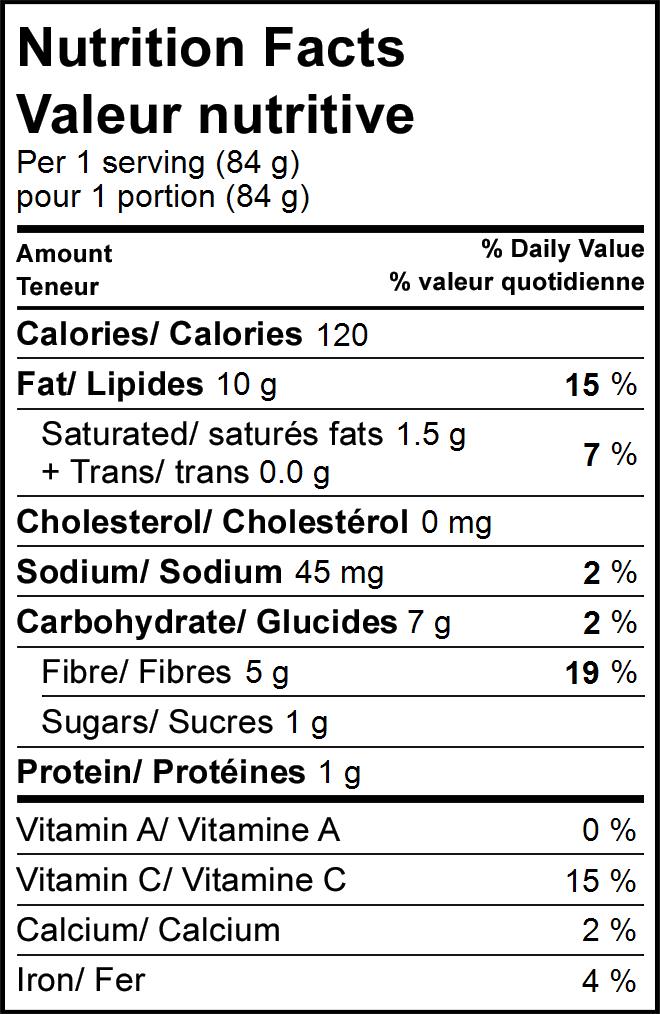
Comparing the two, we can see that per portion, the Slimcado guac comes in at 100 calories per portion with nine grams of fat for a portion of 91 grams. The guac is made with virtually the same ingredients, but the Haas California avocado has 120 calories per portion and ten grams of fat for an 84-gram serving. So, there’s not much difference, and if you prefer the Haas guacamole for the sake of 20 calories, I’d be inclined to go for it. But if you and your customers like the lighter version, it’s definitely worth trying. Of course, this is a version made with mayonnaise; you can vary that with a low-fat mayo, low-fat sour cream or low-fat cream cheese. But you still won’t bring the calorie count down much, as I’ve only used one teaspoon of mayo in this four-portion recipe.
Both of the guac recipes will provide you with a big fibre boost — almost a fifth of your recommended daily amount of fibre in one small portion! They will also provide you with a good source of Vitamin C, especially the Florida version, with 25% of your DV. You’ll note that the carbohydrate amount is low, so if you are watching your carbs or following a ketogenic diet, then go right ahead!
Read more: The Truth about Diabetes
Get Experimenting
If you’re thinking of experimenting with different avocados in different recipes, then you can use MenuSano to generate the nutritional analysis information of the recipe as you go. There’s no need to send your dishes off to a laboratory and wait. Just make sure you correctly add the type of avocado you used, and then it’s super easy to analyze and print out your nutrition facts labels. You can learn more about the benefits of displaying nutritional facts and how to create nutrition labels.

